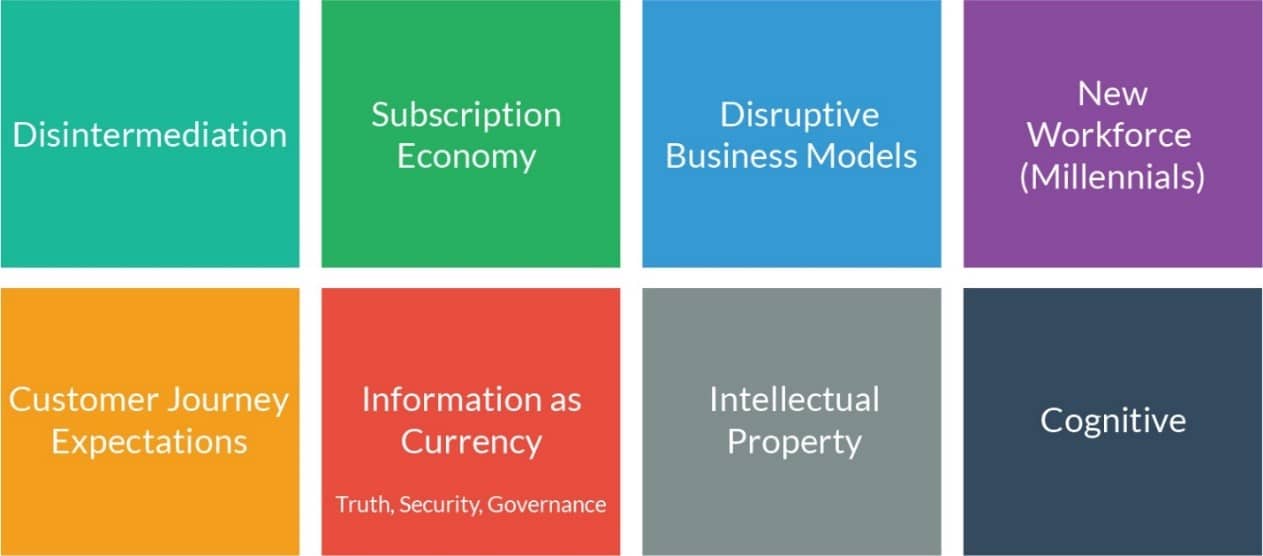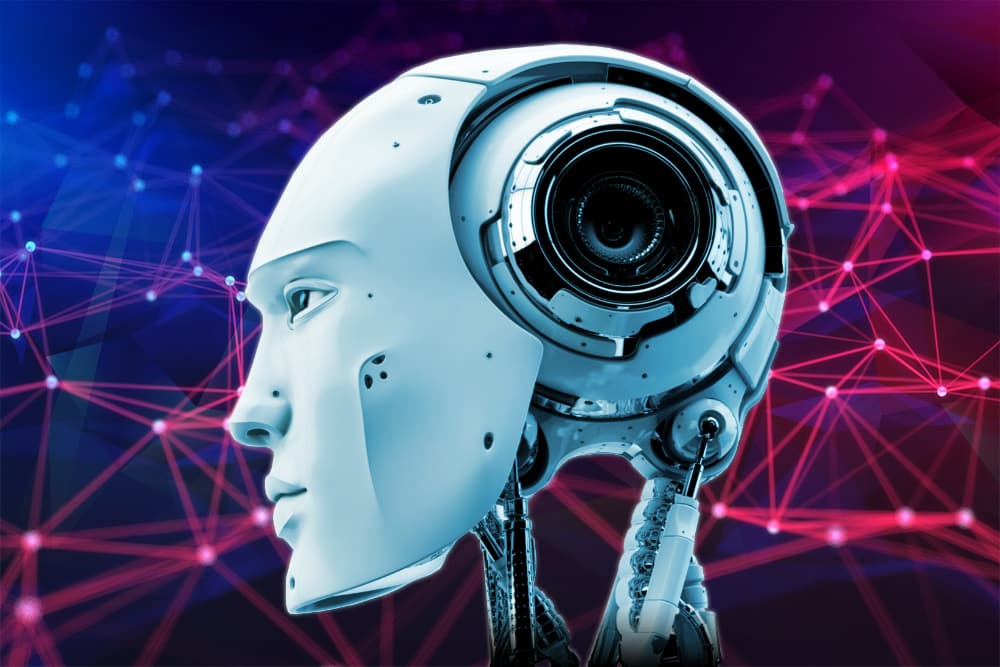In the current Digital Revolution, organizations are facing a confluence of disruptive forces as they climb the technology adoption curve on their journeys to digital transformation.

Key Disruptive Forces
Disintermediation is one of the top forces of change. Today’s digital disruptors are using technology to disintermediate entire industries and unseat corporate giants. New nomenclature has emerged to describe this transformational process. In the Internet Era, we talked about being “amazoned”. During the Digital Revolution, we are talking about being “ubered”.
A common thread to digital disruption is that the middleman is gone in every industry. The relationship to the buyer is direct. Insurance is direct. Movies are direct. Music is direct. The business model pioneered by magazines and publishers is now everywhere. Consumers want the choice to own the asset or have access to it. A subscription model is no longer optional, the Subscription Economy is now a mainstream part of our lives.
In every sector, digital technologies are introducing new business models and changing the rules of business. From completely free models of subscription (like Facebook and Google) to free access with the option to upgrade (iTunes and Skype) to a marketplace model such as eBay or Etsy, a crowdsourcing model such as Kickstarter, or an on-demand model like Spotify or Uber. There are hundreds of examples that cross all industries. In fact, it’s rare to find an industry that hasn’t been disrupted.
As well as new business models, a new workforce is finding its way into the enterprise. In less than a decade, Millennials will overtake retiring demographics and completely reconfigure the workforce. The enterprise will have to cater to Millennials as the first “digital” generation to enter the workforce. Technology is central to the way this demographic works and plays. They take extreme connectivity for granted, functioning on the immediacy of real-time insight and action. The enterprise will need to rethink its organizational structure, its IT infrastructure, and its approach to recruiting, retaining, and motivating this workforce.
Like the Millennials, digital consumers and their expectations are impacting the enterprise. In the digital world, success is based on hyper-differentiation. The digital leaders know this. To maximize engagement, they are digitizing the entire customer journey, delivering a consistently branded experience on any device, consolidating customer information, and mining this to gain insights into consumer behavior to deliver exactly the right experience at the right moment. Digital delivers new ways to engage with customers and build relationships.
Information is the new currency in the Digital Revolution.
New businesses and whole industries are emerging to support the digitization of content. They’re collecting it, analyzing it, and monetizing it at great profit. But where there is opportunity there is also risk. Data is vulnerable. Like money, data can be stolen. As information grows in value, so will the need to protect and manage it. The protection of corporate Intellectual Property (IP) is becoming an increasing concern for organizations as confidential information is housed in digital format. Extreme automation and extreme connectivity will give rise to virtual trade in ideas and a greater need to protect IP.
So information will only grow in value, and its value will be intensified by cognitive systems. Cognitive computing is a game changer for the enterprise with its promise of extreme automation and the creation of highly intelligent, self-learning cognitive technologies. Our devices can already listen to us (through speech recognition software), act as our eyes to monitor aspects of our lives (visually and otherwise) and respond to our touch. While touch screens and wearable devices have revolutionized how we interact with computers; cognitive systems will take interaction to a whole new level. With their ability to make complex decisions quickly based on volumes of data, they will expand our cognition, improve our efficiency, and empower us to be more innovative.
Getting to this point—the adoption of cognitive systems by the enterprise—will be insanely hard. Read my next post to discover how EIM has evolved to help the enterprise overcome these disruptive forces on its transformational journey.




